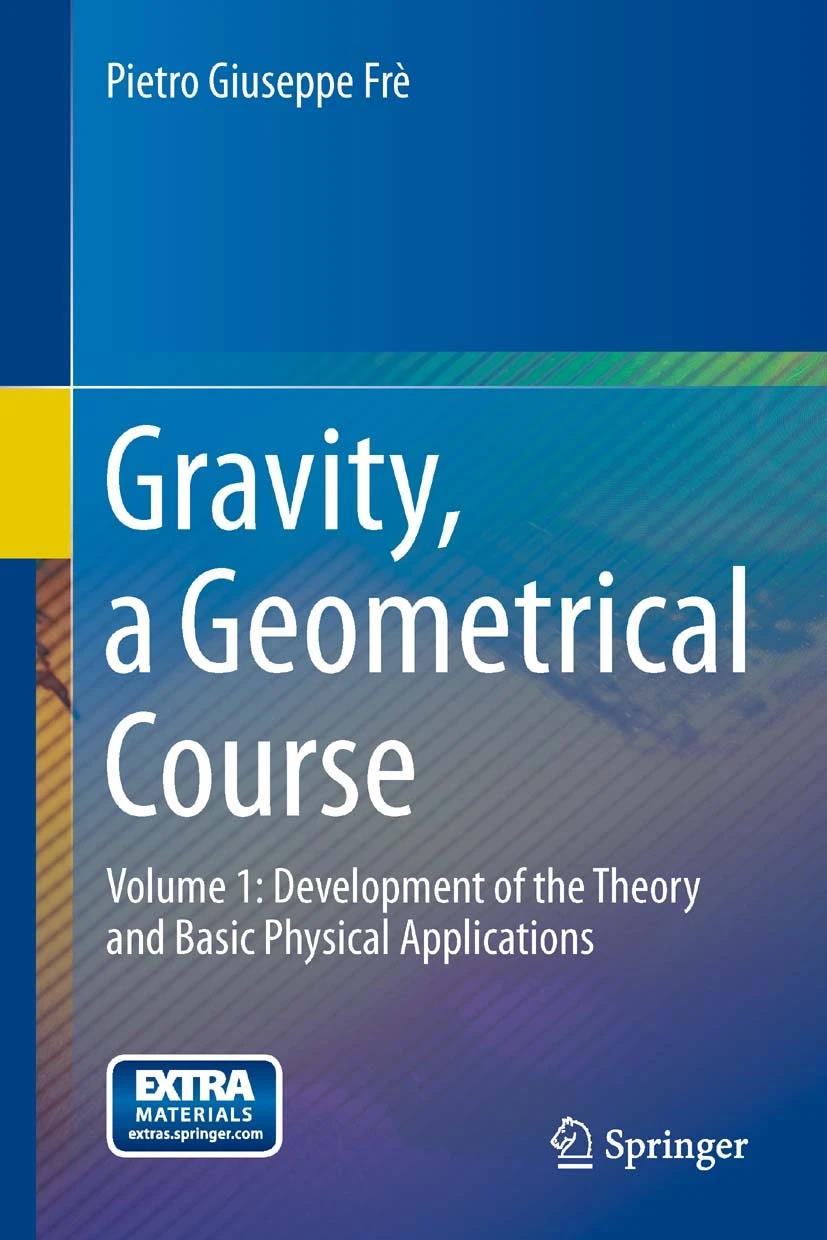
ON SPRINGER LINK
Presents general relativity not in isolation, but as a cornerstone of modern theoretical physics
Gives a systematic exposition of the theory in a self-contained but rigorous mathematical language and includes complete analytical studies of some relevant proplems
Covers both classical general relativity and supergravity
Offers plenty of historical background on the physicists relevant to the theories presented
Enriched with useful appendices with material on spinors, Mathematica programmes, and much more
Available also from Amazon
Gravity, a Geometrical Course presents general relativity (GR) in a systematic and exhaustive way, covering three aspects that are homogenized into a single texture: a) the mathematical, geometrical foundations, exposed in a self consistent contemporary formalism, b) the main physical, astrophysical and cosmological applications, updated to the issues of contemporary research and observations, with glimpses on supergravity and superstring theory, c) the historical development of scientific ideas underlying both the birth of general relativity and its subsequent evolution. The book is divided in two volumes.
Volume One is dedicated to the development of the theory and basic physical applications. It guides the reader from the foundation of special relativity to Einstein field equations, illustrating some basic applications in astrophysics. A detailed account of the historical and conceptual development of the theory is combined with the presentation of its mathematical foundations. Differentiable manifolds, fibre-bundles, differential forms, and the theory of connections are covered, with a sketchy introduction to homology and cohomology. (Pseudo)-Riemannian geometry is presented both in the metric and in the vielbein approach. Physical applications include the motions in a Schwarzschild field leading to the classical tests of GR (light-ray bending and periastron advance) discussion of relativistic stellar equilibrium, white dwarfs, Chandrasekhar mass limit and polytropes. An entire chapter is devoted to tests of GR and to the indirect evidence of gravitational wave emission. The formal structure of gravitational theory is at all stages compared with that of non gravitational gauge theories, as a preparation to its modern extension, namely supergravity, discussed in the second volume.
When I was selected as Full Professor of Theoretical Physics by the National selecting commitee in 1989 I was appointed at SISSA (Scuola Superiore di Studi Avanzati) in Trieste and for 6 years I left my home University of Torino where I had been teaching Mathematical Methods of Physics. At SISSA I thought graduate courses in Group Theory. Appointed in 1996 by Torino University on the Chair of Relativity left open by the shift of Prof. Tullio Regge to Torino Politecnico, I felt the responsability of constructing a Course on General Relativity that should be updated to modern views but should meet the standards of a historical tradition of excellency. The result was a very ample course articulated in formal mathematical foundations, logical and rigorous exposition of the theory, astrophysical and cosmological applications, new theoretical visions. I taught that course for 15 years prior to my appointment as Scientific Counsellor of the Italian Embassy in Moscow. During my Moscow years I had the time of writing the 2-volume book Gravity: a Geometrical Course that upon my coming back to Torino in 2017 was the basis of my renewed teaching of the General Relativity Course for the last five years of my academic career.



